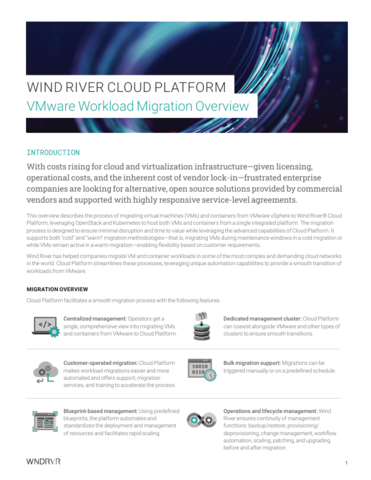Why better headcount planning is key to preventing tech layoffs
Sponsored by Pigment68,000 tech employees have lost their jobs to market downturns so far. Can better headcount planning prevent further harm?

We live in volatile times at the workplace. The onset of the Covid-19 pandemic transformed our ways of working, from daily commutes and a regular 9-to-5 to remote offices and 4-day work weeks.
The Great Resignation also fueled four million people to quit their jobs in pursuit of new opportunities. And now, economic uncertainty is causing mass layoffs and has shifted power back into the hands of employers.
This type of volatility is hardly surprising in the tech world. We’ve witnessed these ebbs and flows before – yet seemingly we’ve still got some lessons to learn.
One of the top lessons? How to prevent layoffs from happening in the first place with better headcount planning solutions.
The connection between tech layoffs and the Great Resignation
Recruiters have a love-hate relationship with the era known as the Great Resignation.
On one hand, a pandemic-induced job seeker’s market afforded employees the freedom to truly explore their needs and passions. They had more opportunities to be matched with a role at a company that aligned with their own principles.
On the flip side, we witnessed what was dubbed “the great regret” – a massive proportion of jobseekers unhappy with their new jobs, often hopping to third or fourth roles in a span of months.
In privately-owned companies, the abundant influx of money worsened, rather than improved, hiring challenges. Although this impacted the entire labour market, the technology space saw the situation further exacerbated due to the near-instant availability of venture capital.
Globally, venture dollar infusion reached new heights in 2021, up 92 per cent from 2020 and birthing 1,000+ “unicorns”. This excess spurred the “growth at all costs” mindset.
The combination of employees seeking greener pastures and newly minted unicorns pushing for further growth caused companies to hire indiscriminately in a bid to outgrow competitors, fast.
Until it backfired, leading to thousands of layoffs and job offers revoked.
While layoffs are not new in the tech world, we’re now in the age of instant information–and there are millions of eyes watching each misfired management directive.
Hiring decisions are mission-critical for sustainable success
There’s a stark difference in outcomes from executing a best-in-class plan, and one that is merely good enough. That difference could shield resources from being caught in the cross-fires of poor planning.
The younger generations of the workforce increasingly prefer to work for ethical employers who actively involve themselves in social causes, environmental consciousness, and mental health initiatives.
Regardless of the rationale, layoffs do not portray companies as thoughtful or caring, especially when done shortly after hiring sprees.
The reality is that every business decision has tenfold implications on the professional and personal lives of its stakeholders.
Arguably, a company’s probability of success is directly correlated with the strength of its workforce. Layoffs do not only leave a bitter taste in former and current employees’ mouths, but also in future ones.
This is why each hiring and termination decision is a critical move in determining the future sustainability of any business.
Headcount planning is in desperate need of a makeover
Given how much some companies invest in hiring the talent they seek, it is surprising how lackluster their headcount planning approaches can be.
Headcount planning is the complex science-meets-art process of determining and budgeting for talent to fulfill the company’s objectives.
It is a process involving multiple sources of data, such as Human Resource Management Systems (HRMS), Applicant Tracking Systems (ATS), and Customer Relationship Management (CRM) platforms. It also involves just as many decision-makers.
When legacy systems, such as makeshift spreadsheet models or age-old business planning systems, are put to the task of headcount planning, they invariably underperform.
These legacy systems lack the processing power to transact on millions of rows of data. They are missing time-saving automation and integration capabilities, resulting in rushed decisions and human error.
At the junction of lagging software and multilayered stakeholders lies the recipe for bureaucracy, and ultimately, poor hiring decisions.
A vision for the future of tech with better headcount planning
Every decade or so, new players emerge to challenge the status quo of existing software solutions. Headcount planning is no exception to the rule.
Next generation integrated business planning and analytics platforms have been stealing the spotlight from legacy giants at a noticeable pace.
These newer solutions offer modern interfaces that are easy to learn and intuitive to use. They still manage to outperform the capabilities of traditional headcount planning software by incorporating critical missing elements-native scenario planning, extensive integrations, intuitive formula building and powerful forecasting capacity.
The headcount planning process is improved by shortening the time to translate high-level business requirements to seats filled.
The implications stretch beyond headcount and workforce planning, to use cases such as sales and operations planning, capacity planning, and KPI reporting.
A robust headcount planning process affords companies a 360° view of where the business stands at any given point in time. Furthermore, leaders are able to prepare for the outcome of every possible future scenario.
The end result is a world where companies and their leaders are empowered to ask “what if?”, and safely preview the results of decisions before taking them.
A little bit of planning goes a long way
No leader wants to make the wrong decision, or one which backfires – especially when those decisions affect the lives of people.
Layoffs are difficult, bitter events that often harm the reputation (not to mention the morale) of companies forced to resort to such means.
The optimal path forward, with reimagined and state-of-the-art headcount planning, will positively impact both the workforce and companies keen to invest in talent.
The tech industry should be at the forefront of solving headcount planning challenges with a forward-looking strategy based on upgraded systems.
However, better planning would certainly benefit not only tech companies.
While they didn’t see the same hiring-to-firing swings as the tech sector, many large and public companies still saw overnight hiring freezes which might have been more gradual with better tools. This key investment in the present will go a long way in preventing future mass layoffs.
Pigment is an integrated business planning platform helping you make smarter decisions with more confidence. Explore the powerful capabilities of our next generation solution here.
by Julien Lesaicherre, Head of Business, Pigment
Sources: layoffs.fyi/ , news.crunchbase.com/business/global-vc-funding-unicorns-2021-monthly-recap/

Business Reporter Team
Most Viewed
Winston House, 3rd Floor, Units 306-309, 2-4 Dollis Park, London, N3 1HF
23-29 Hendon Lane, London, N3 1RT
020 8349 4363
© 2025, Lyonsdown Limited. Business Reporter® is a registered trademark of Lyonsdown Ltd. VAT registration number: 830519543





